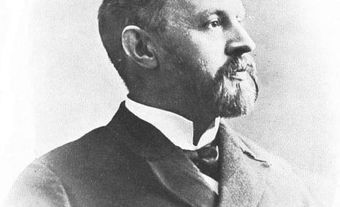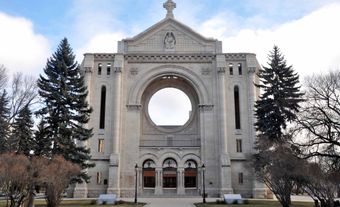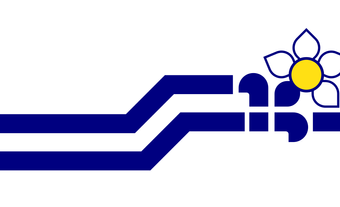The Estates General of French Canada were a series of conferences held from 1966 to 1969 which gathered over a thousand delegates from Quebec, Acadia, Ontario and Western Canada. These last patriotic assemblies organized after the Congrès de la langue française (1912, 1937, 1952) marked an important turning point in the history of French-Canadian nationalism and in that of the relationship between Quebec and the Canadian Francophonie.
Origins
The idea to call the Estates General was articulated for the first time in June 1961 during a joint congress between Ontario and the Fédérations des Sociétés Saint-Jean-Baptiste du Québec (FSSJBQ). In light of the Quiet Revolution, the separation of church and state and the growing issue of Quebec’s national status, the leaders felt the need to make a moderating gesture. The community was thus able to consider and discuss the constitutional future of the French-Canadian nation and to guide reforms accordingly.
A first meeting, organized by the FSSJBQ, took place in August 1962. In Quebec City, future premier Jean-Jacques Bertrand, then member of the Legislative Assembly under the Union nationale party, became a supporter of the project. In fact, his participation forced the liberal government under Jean Lesage into establishing the Parliamentary Committee on the Constitution (June 1963). In the fall of 1963, the FSSJBQ presented the first drafts for the objectives and structures of the Estates General. A coordinator was appointed, and a final report was produced in December.
Foundation and preliminary conferences of 1966
These efforts culminated on 4 April 1964, with the convocation of the founding assembly of the Estates General. The text signed by some fifty participants underlined the urgency of situating the nation’s reality at the time and of defining the direction it should follow to survive. It also requested the collaboration of specialists and groups forming the organized nation.
This call translated the haste felt within the Sociétés Saint-Jean-Baptise to resolve the institutional crisis in French Canada. They did not believe that legislators could singlehandedly make decisions for this community. Built on history, language and culture, the nation stepped forward concretely, represented by a wide network of associations which were often confessional. The rationale behind the Estates General reflected this organic creation of the nation.
Between 1964 and 1966, the organization saw several crises. The rise of the sovereign movement in Quebec created rifts within the ranks of the FSSJBQ. The project was temporarily idled, then relaunched in the fall of 1965. Léo Gagné, the new director, acquired the services of well-known figures, namely constitutionalist Jacques-Yvan Morin and Rosaire Morin, editor-in-chief of the magazine L’Action nationale. Together, the latter took the helm of the Estates General in the spring of 1966, when the FSSJBQ granted the organization’s independence and stepped back to support through animation and funding only.
In November 1966, the preliminary conferences took place at the Université de Montréal.
Organization and execution
At first, the Estates General were regulated by an annual assembly of civilian associations and organizations. The assembly appointed a general Commission of approximately twenty members. With time, this structure became more complex and sustained 37 members to ensure the representation of francophones outside Quebec and intermediate bodies. The Commission then established a governing board which would be supported by a technical commission and an administrative commission. Sectoral committees (cultural, social, economic, political, etc.) completed the organization chart.
Public participation was an important issue. The general Commission had a two-part representation mechanism. On one hand, certain delegates were voted in. On 16 April 1967, in 105 Quebec constituencies, 8877 institution representatives elected 1575 delegates and 471 substitutes. On the other hand, the Quebec and Canadian Francophonie intermediate bodies chose their representatives. These two mechanisms (elective and nominative) and the territorialisation of delegations created difficulties for the organisers who were responsible for adjudicating on voting rights. In the end, all the delegates enjoyed equal voting rights at the preliminary conferences.
The conferences were usually conducted in the same order. After the customary speeches, the debates were held at commission level. During the 1966 conferences, 36 commissions discussed 24 topics. Each commission would report to the plenary session, where resolutions would be agreed upon.
National conferences in 1967 — a breaking point?
Between 23 and 27 November 1967, more than 2000 delegates and observers, including 364 francophones outside Quebec, participated in the national Estates General of French Canada conferences. These were set against a special background. That year, the hundredth anniversary of the Canadian Confederation was celebrated, the “Universal and International Exhibition” was held in Montreal under the theme “Man and His World”, and French president Charles de Gaulle proclaimed his fateful words on a free Quebec during his visit in Montreal.
Several historians believe that the Estates General marked a break in the ties between Quebecers and francophones outside the province. There is a clash between the two visions of the nation: the traditional French Canada on the one hand, and the Quebecois nation on the other. The latter was built on the promotion of the French language, the Quebec geographic territory and the decisive role of the Quebec state in the promotion of French presence in North America. The debate culminated during the discussion on the French Canadians’ right to self-determination. The resolution recognized Quebec as a national territory of French Canada and led delegates outside the province to express their frustration during the interventions and the vote. Franco-Ontarians rejected the resolution at 55% while the francophones in the West voted equally for acceptation, rejection and abstention. However, a majority of Acadians (52%) and 98% of Quebecois delegates supported the resolution.
1969 conferences
The last conferences took place in March 1969, but the 1967 debates had left their mark. Of the 1866 registrations, only 125 were for members of the francophone minorities. The constitutional file was still a priority because of the adoption of a resolution which called Quebec constitution and the convocation of a constituent assembly.
Memory and legacy
The results of the Estates General were subject to debate. Some believed that they represented the “last act” in the history of French-Canadian nationalism and that they marked a quasi-permanent break between Quebec and the French-speaking minorities (see Francophone nationalism in Quebec). For them, the Estates General symbolized the evolution of French Canada, the emergence of territorial identities (Quebecois, Franco-Manitobans, Franco-Albertans, Franco-Ontarians, etc.) and the difficulties which marked the dialogue between minority groups in Canada and the Quebec state. Representatives of communities outside Quebec sometimes interpreted these changes as an abandonment of francophones residing outside the provincial territory.
Others believed that they were an unprecedented democratic exercise representing the nationalist consensus that resulted from the Quiet Revolution. They held that the passed resolutions, namely the right to self-determination, the primacy of the French language, the extended powers of Quebec in matters of labour, social security, international relations and immigration, would influence sovereigntist and federalist parties alike in the coming decades.
Since then, historians have brought some nuance to the hypothesis that the break resulted from the Estates General. Without minimizing the impact of this event in the formation of francophone identities in Canada, they sought to understand how the solidarities and ties between Quebec and the Canadian Francophonie were rebuilt after the late 1960s.

 Share on Facebook
Share on Facebook Share on X
Share on X Share by Email
Share by Email Share on Google Classroom
Share on Google Classroom







